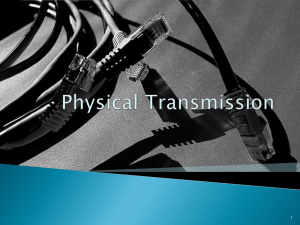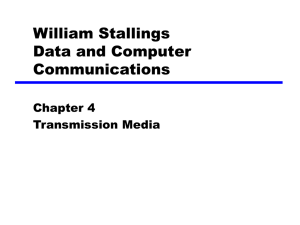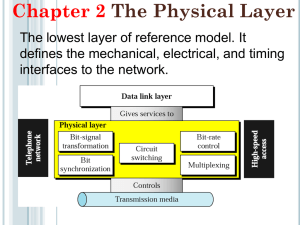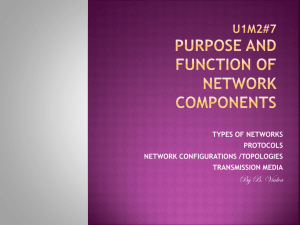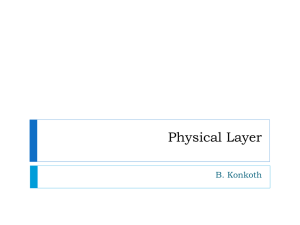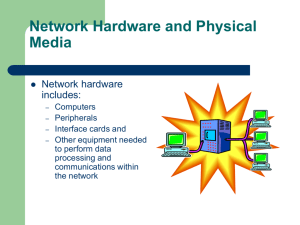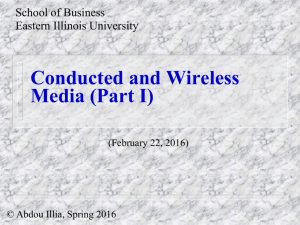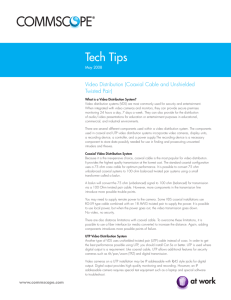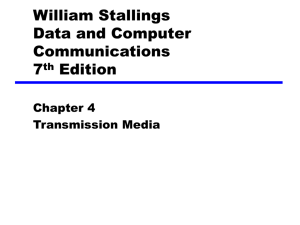1-Introduction :
advertisement
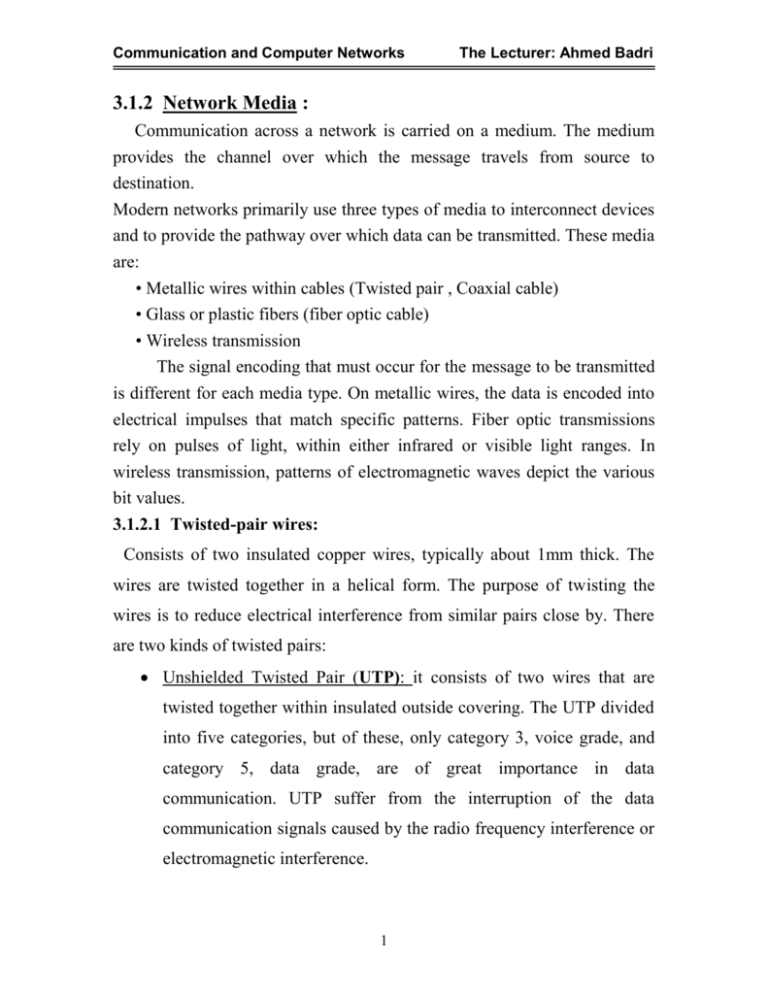
Communication and Computer Networks The Lecturer: Ahmed Badri 3.1.2 Network Media : Communication across a network is carried on a medium. The medium provides the channel over which the message travels from source to destination. Modern networks primarily use three types of media to interconnect devices and to provide the pathway over which data can be transmitted. These media are: • Metallic wires within cables (Twisted pair , Coaxial cable) • Glass or plastic fibers (fiber optic cable) • Wireless transmission The signal encoding that must occur for the message to be transmitted is different for each media type. On metallic wires, the data is encoded into electrical impulses that match specific patterns. Fiber optic transmissions rely on pulses of light, within either infrared or visible light ranges. In wireless transmission, patterns of electromagnetic waves depict the various bit values. 3.1.2.1 Twisted-pair wires: Consists of two insulated copper wires, typically about 1mm thick. The wires are twisted together in a helical form. The purpose of twisting the wires is to reduce electrical interference from similar pairs close by. There are two kinds of twisted pairs: Unshielded Twisted Pair (UTP): it consists of two wires that are twisted together within insulated outside covering. The UTP divided into five categories, but of these, only category 3, voice grade, and category 5, data grade, are of great importance in data communication. UTP suffer from the interruption of the data communication signals caused by the radio frequency interference or electromagnetic interference. 1 Communication and Computer Networks The Lecturer: Ahmed Badri Shielded Twisted Pair (STP) cable: consists of pairs of insulated solid wire surrounded by a braided or corrugated shielding. STP reduces the interruption of the data communication signals caused by the radio frequency interference or electromagnetic interference. The superiority of STP over UTP came from that STP - give better noise immunity. - support a long distance transmission. - provide high-speed transmission UTP cable STP cable 3.1.2.2 Coaxial Cables: A coaxial Cable consists of a stiff copper wire as the core, surrounded by an insulating material. The insulator is encased by a cylindrical conductor, often as a closely woven braided mesh. The outer conductor is covered in a protective plastic sheath. A coaxial Cable is much less susceptible to electromagnetic interference and can carry much more data than the twisted pair wires. Because of this, it is used to carry high-speed data traffic as well television signals. Coaxial cable 2 Communication and Computer Networks The Lecturer: Ahmed Badri There are two types of coaxial Cable: Thin coaxial cable: it is a thin flexible wire, it’s diameter 0.6 cm that connected directly to the network card (used in 1.base 2 networks). Thick coaxial cable: it is a thick and solid wire, it’s diameter 1.2 cm that can transmit the data for long distances (nearly 185 m) without signal attenuation (used in 1.base 5 networks). 3.1.2.3 Optical fiber cables: Optical fiber consists of a thin core made of glass or plastic, surrounded by a cladding, also glass or plastic, but with different properties from the core and finally there is a protective jacket (plastic). In general, light confined to the central core by a phenomenon called total internal reflection, whereby it cannot escape through the discontinuity in optical properties at the core-cladding interface. (a) view of a single fiber. (b) End view of a sheath with three fibers. Fiber optic cable can carry huge amounts of information at fast data rates. Each core transmit the light in only one directional, therefore we must use two-fiber optic, one for sending and the other for receiving. Advantages of fiber optic cable: They have far superior electromagnetic isolation and more resistance to noise. 3 Communication and Computer Networks The Lecturer: Ahmed Badri The attenuation rates are very low. The transmission speed of data is very high and carries the data for long distances. In optical fiber, the digital data transformed to light pulses, this leads to prevent the electrical signal to pass through these fibers. This provides a good security. Disadvantages of fiber optic cable: It is most expensive. The energy of the light pulse reduced through the propagation, due to absorption and scattering. 4
